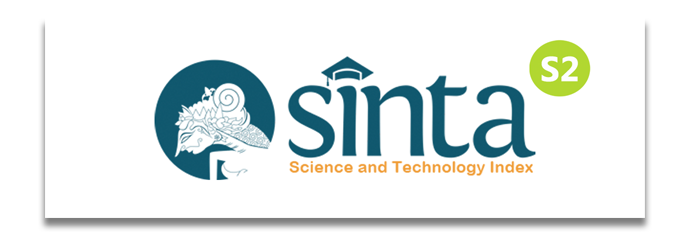Stigmatization of Leprosy Patients at the Primary Hospital in North Central Timor: a Qualitative Study
Downloads
Background: Leprosy is a chronic bacterial infection that affects the peripheral nervous system, skin, nosend eyes and can cause disability. Clinical symptoms and disabilities can give leprosy patients a negative impression, known as stigma, which can affect their self-acceptance. Purpose: This study aims to analyze the perceptions of leprosy patients at the a primary hospital in North Central Timor regarding the stigma they experience. Methods: The study was a qualitative research, utilizing the in-depth interview method. The sampling technique used purposive sampling, applied maximum variation sampling, and involved 20 patients in the study.The interview results were transcribed and analyzed using the Open Code 4.03 program. The coding results were grouped into themes and subthemes that emerged. Result: This study found that internal and social stigma affected 80% of the 20 leprosy patients at a primary hospital. Misperceptions primarily cause internal stigma, which in turn triggers fear of infection and isolation from the community. Social stigma, also triggered by misperceptions, leprosy symptoms, and disability, leads to discrimination, and ostracism, even in family circles and places of worship. Patients experience negative impacts on their self-esteem, social life, and economy. Conclusion: Leprosy patients experience internal and social stigma, with 16 out of 20 patients affected. Misperceptions, symptoms, and disability due to leprosy are the leading causes. This stigma has far-reaching social, economic, and educational impacts. Support, education, and preventive measures are needed to overcome the stigma that worsens the condition of leprosy patients.
World Health Organization. Leprosy [Internet]. 2023 Jan [cited 2023 Mar 31].
Siswanto T, Asrianti T, Mulyana D. Neglected tropical disease kusta epidemiologi aplikatif. Samarinda: Mulawarman University Press; 2020.
World Health Organization. Weekly epidemiological record 2022; 2021(36):429–52.
Ministry of Health of the Republic of Indonesia. Leprosy. Data Validation Report 2022. [cited 2023 Mar 31].
Putri MA, Harmayetty H. The effect of psychoeducative family therapy on knowledge, family support, and leprosy stigma with the Calgary approach model at the Balerejo Health Center, Madiun Regency. J NERS. 2016;11(1):88.
Wulan Sari DAK, Soewondo LS. Analysis of factors associated with self-esteem of leprosy patients in Kediri Leprosy Hospital. J Stikes. 2017;10.
Sermrittirong S, Van Brakel WH. Stigma in leprosy: Concepts, causes and determinants. Lepr Rev. 2014;85(1):36–47.
Kinanti H, Alinda MD. The impact of leprosy-related stigma and coping mechanisms of people affected: A qualitative study from a suburban area in Northern district of Gresik, Indonesia. Lepr Rev. 2024;95(2):1-11.
Rijali A. Qualitative data analysis. Alhadharah J Da'wah Sci. 2019;17(33):81.
Bos AER, Pryor JB, Reeder GD, Stutterheim SE. Stigma: Advances in theory and research. Basic Appl Soc Psych. 2013;35(1):1–9.
Armaijn L. Perceptions of leprosy patients towards leprosy stigma in Ternate city. Kieraha Med J. 2019;1(2):31–7.
Aulia PW. Stigma towards leprosy patients: A study of the forms of stigma and reactions to stigma experienced by leprosy patients in the treatment process in Mojokerto District. Nucl Phys. 2019;13(1):104–16.
Van’T Noordende AT, Lisam S, Ruthindartri P, Sadiq A, Singh V, Arifin M, et al. Leprosy perceptions and knowledge in endemic districts in India and Indonesia: Differences and commonalities. PLoS Negl Trop Dis. 2021;15(1):1–19.
Menaldi SL, Harini M, Nelfidayani N, Irawati Y, Setiono S, Wahyuni LK, et al. Functional activity limitation of leprosy cases in an endemic area in Indonesia and recommendations for integrated participation program in society. PLoS Negl Trop Dis. 2022;16(8):1–13.
Jufrizal, Nurhasanah. Community stigma in leprosy patients. Idea Nurs J. 2019;10(1):27–31.
Marahatta SB, Amatya R, Adhikari S, Giri D, Lama S, Kaehler N, et al. Perceived stigma of leprosy among community members and health care providers in Lalitpur District of Nepal: A qualitative study. PLoS One. 2018;13(12):1–13.
Copyright (c) 2025 Berkala Ilmu Kesehatan Kulit dan Kelamin

This work is licensed under a Creative Commons Attribution-NonCommercial-ShareAlike 4.0 International License.
- Copyright of the article is transferred to the journal, by the knowledge of the author, whilst the moral right of the publication belongs to the author.
- The legal formal aspect of journal publication accessibility refers to Creative Commons Atribusi-Non Commercial-Share alike (CC BY-NC-SA), (https://creativecommons.org/licenses/by-nc-sa/4.0/)
- The articles published in the journal are open access and can be used for non-commercial purposes. Other than the aims mentioned above, the editorial board is not responsible for copyright violation
The manuscript authentic and copyright statement submission can be downloaded ON THIS FORM.















